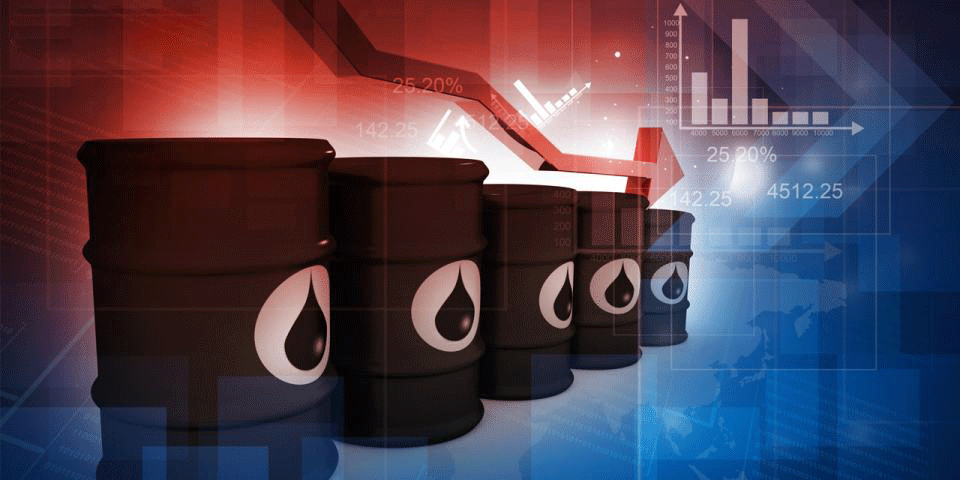
如果想知道石油价格暴跌对明年的全球原油供应有何影响,只需看美国和伊拉克这两个国家的动向即可,这是因为它们在2015年向全球原油市场的供应量比其他任何国家都要多。
今年美国和伊拉克所增加的原油数量几乎相当于全球原油过剩量的80%。全球各大预测机构均表示这两个国家在2016年都将无法继续增加原油产量。
美国减产主要是因为油价太低无法激励供应商,而伊拉克则是由于与“伊斯兰国”的战争耗费了大量财力,因而降低了该国的原油增产能力。
Barclays Plc称,全球原油供应过剩致使油价跌至40美元左右,然而发展速度最快的两个产油国开始减产,意味着明年的过剩局面可能有所缓解。虽然这可能使沙特阿拉伯重新平衡全球原油市场的计划生效,但伊拉克的处境表明OPEC的所有产油国会因计划生效而饱受煎熬。
总部位于挪威首都奥斯陆的挪威银行的分析师Torbjoern Kjus通过电子邮件表示:“美国和伊拉克是造成全球原油过剩的两个主要因素,展望2016年,这两个国家的产量都将受到挑战。产量递减速度加快和投资减少将导致美国原油出口放缓,而伊拉克也不可能在当前水平上再有大幅增加。”
这两个国家现在一年生产48.8亿桶油,较2012年初增加了17.7亿桶,增幅接近60%。同期,经济合作与发展组织(OECD)成员国的原油库存增加了3.14亿桶,增幅为12%。

国际能源署预计称,尽管美国的页岩油气开发已经连续六年帮助实现全美原油输出的大繁荣,但是页岩油气的产量明年将以60万桶/日的速度下降。今年美国的原油供应量正以83万桶/日的速度增长,这主要是德州和北达科他州页岩油的贡献。
国际能源署在11月13日公布的一份报告中称,伊拉克明年的产量可能与今年大体持平,这是因为它难以承受OPEC成员国所协定的50美元/桶的油价以及与“伊斯兰国”武装恐怖分子之间耗资巨大的战争。
此外,伊拉克首都巴格达还要竭力补偿那些在南部油田投资的国际油企。英国石油公司(BP)将今年的运营预算削减至10亿美元,减少了60%。随着油价的减半, 伊拉克不得不支付给外国原油公司双倍数量的原油。

在北部,处于半自治状态的库尔德地区因与巴格达发生预算纠纷,而无法付款给合作伙伴。开发Tawke油田的挪威DNO ASA公司和开发Shaikan油田的Gulf Keystone公司均表示将搁置他们的计划,直到收到政府的补偿。
库尔德地区政府在9月份开始每月定期转账给这些油企,但DNO称它只收到月出口补偿的一半,政府根本没有支付过积压的欠款。
伦敦巴克莱大宗商品研究的负责人Kevin Norrish表示,原油生产供大于求的不利局面正在慢慢缓解,美国页岩油产量超过去年的情形将结束,伊拉克原油产量也受到战争、基础设施等客观条件的约束,沙特结束了其原油出口上升趋势,欧佩克稳定增产的步伐也可能将暂停。
种种迹象表明供应过剩局面正在缓解,全球原油市场正在重新平衡,当然这会是一个漫长的过程。
To understand what the oil price crash will mean for global crude supplies next year, look no further than the two nations that added more barrels to world markets in 2015 than anyone else. The U.S. and Iraq, whose extra crude this year equates to about 80 percent of the global surplus, will fail to boost output in 2016, according to the world’s biggest forecasters. While the U.S. curtailment is mainly because prices are too low to spur fresh supply, the Middle East country’s ability to boost output is also being crimped by a need to fund its battle with Islamic State.
Slowing output in the the two fastest-growing producers signals the global glut, which has depressed oil prices to near $40 a barrel, may begin to dissipate next year, according to Barclays Plc. While that would start to fulfill Saudi Arabia’s plan to re-balance world crude markets, Iraq’s struggles show that producers in OPEC are also suffering as that strategy takes effect.
“The U.S. and Iraq have been two of the biggest contributors to the global oil surplus and when we look at 2016, production in both will be challenged,” Torbjoern Kjus, an analyst at DNB ASA in Oslo, said by e-mail. “Accelerating decline rates and reduced investment will lead to falling U.S. output, while Iraq is unlikely to see much growth from further levels.”
The two nations are now pumping the equivalent of 4.88 billion barrels a year, an increase of 1.77 billion barrels, or almost 60 percent, compared with their output rates at the start of 2012. To put that in context, oil inventories in Organization for Economic Co-operation and Development nations expanded by 314 million barrels, or 12 percent, in the corresponding period.
U.S. shale production, which has driven a six-year boom in the nation’s oil output, will decline by 600,000 barrels a day next year, according to the International Energy Agency. Total U.S. oil supply is set to surge by 830,000 barrels a day this year, powered by shale formations in Texas and North Dakota. Oil traded at $40.39 a barrel in New York at 9:49 a.m. New York time.
Iraqi production “is likely to remain broadly flat” next year as the OPEC member “is struggling with the stress of $50-a- barrel oil and a costly battle” with Islamic State militants, the IEA said in a report on Nov. 13. Baghdad is also straining to reimburse international oil companies for investments in southern fields. BP Plc cut this year’s operations budget by 60 percent to $1 billion. As oil prices halved, Iraq has had to pay twice the amount of crude to foreign firms who receive per- barrel fees in the form of cargoes.
In the north, the semi-autonomous Kurdish region is struggling to pay partners amid a budget dispute with Baghdad. DNO ASA, the Norwegian operator of the Tawke field, and Gulf Keystone, which operates Shaikan, have said their plans are on hold until they receive overdue payments for output from the government. The Kurdistan Regional Government began making regular monthly transfers to companies in September, although DNO says it’s only receiving half of what it is owed for monthly exports and nothing towards reducing accumulated arrears.
With output gains in jeopardy, “there are signs that the supply glut is easing,” said Kevin Norrish, managing director for commodities research at Barclays in London. “U.S. shale oil growth measured over last year’s levels is now coming to an end at last and given the infrastructure constraints in Iraq, plus an end to the upward trend in Saudi output it seems the phase of steadily rising OPEC production may be pausing for now as well,” he said. “The long, slow process of re-balancing the oil market continues.”
未经允许,不得转载本站任何文章:

 石油圈
石油圈


